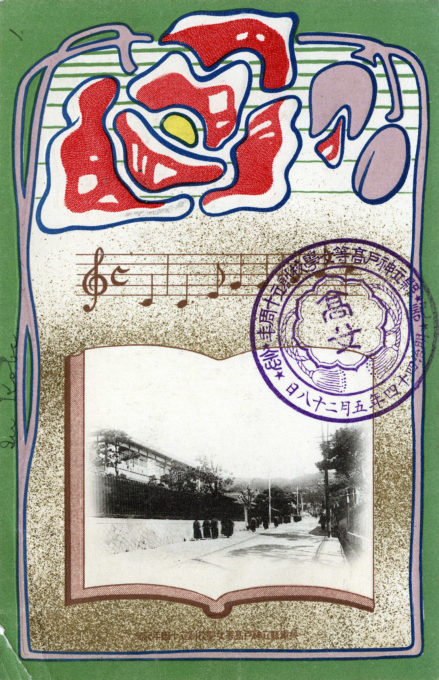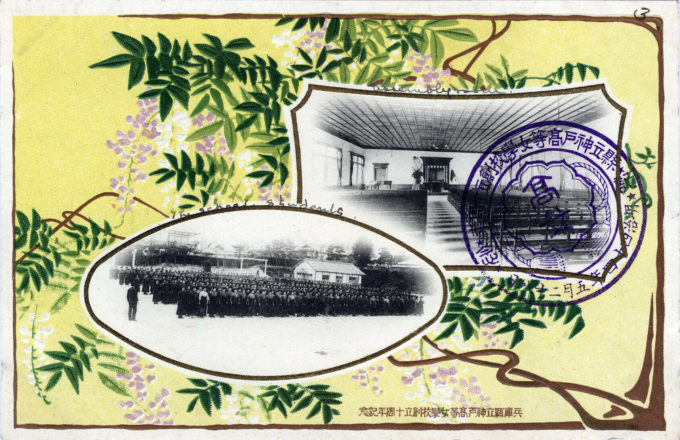“Due to the negligence of the government on women’s secondary education, the first government high school for women in Hyogo prefecture, where the city of Kobe is located, was not founded until 1901.”
– American Women Missionaries at Kobe College, 1873-1909, by Noriko Kawamura Ishii, 2004

10th Anniversary Founding of the Hyogo Prefectural Girls’ School, Hyogo (Kobe), commemorative postcard, 1911. Operated within the oversight of the Ministry of Education, secondary (higher) schools were built and run by each prefecture, publicly funded but not compulsory. Hyogo Prefectural Girls School was established two years after the national government created the Girls Higher School Order (more than five years after the establishment in 1894 of the Boys Higher School Order), providing for a secondary education for young women beyond the compulsory six-year elementary curriculum.
See also:
Girls Normal School, Ochanozmizu, c. 1910.
Sendai Private High School for Girls (Sendai Koto Jo Gakko), Sendai, c. 1910.
“All the staff and students of Kinjo Girls’ School”, Nagoya, c. 1920.
“With the Girls Higher School Order (Kōtō jogakō rei) of 1899, which established secondary education for women beyond the six years of compulsory education, new opportunities for women to continue their education at girls’ higher schools drew the daughters of wealthy farm families to the cities, where they joined the urban elite in the modernization of women’s education.
Hyogo Prefectural Girls’ School, Hyogo (Kobe), 10th Anniversary commemorative postcard, 1911. On the reverse side was written, “They teach Japanese words set to our music. We heard a splendid chorus sung by about 80 girls. Three-part music. These three cards presented to us by the pupils.”
“Most girls entered the higher schools at age thirteen, immediately after completing the six years of compulsory education … With the issuing of the order, the number of girls’ higher schools increased rapidly from 37 schools with 8,857 students in 1899 to 193 schools with 55,882 students by 1910.
“In explaining the reasoning behind the adoption of the new order, education minister Kabayama Sukenori (1837–1922) stated that girls’ higher schools ‘exist for the nourishment of good wives and wise mothers (ryōsai kenbo). As a consequence, together with nourishing a warm and chaste character and the most beautiful and elevated temperament, it is necessary that they furnish the knowledge of arts and crafts necessary for middle to upper class life.’
“… [T]he state’s purpose in establishing women’s higher education was not the self-actualization or economic independence of women, but rather the promotion of women’s intellectual fitness to raise and educate young boys to serve the Japanese empire. In this way, their roles as mothers became conflated with their duty to the nation.”
– Gender and Nation in Meiji Japan: Modernity, Loss, and the Doing of History, by Jason G. Karlin, 2014




Pingback: Japan Women’s University, Meijiro, Tokyo, c. 1920. | Old TokyoOld Tokyo